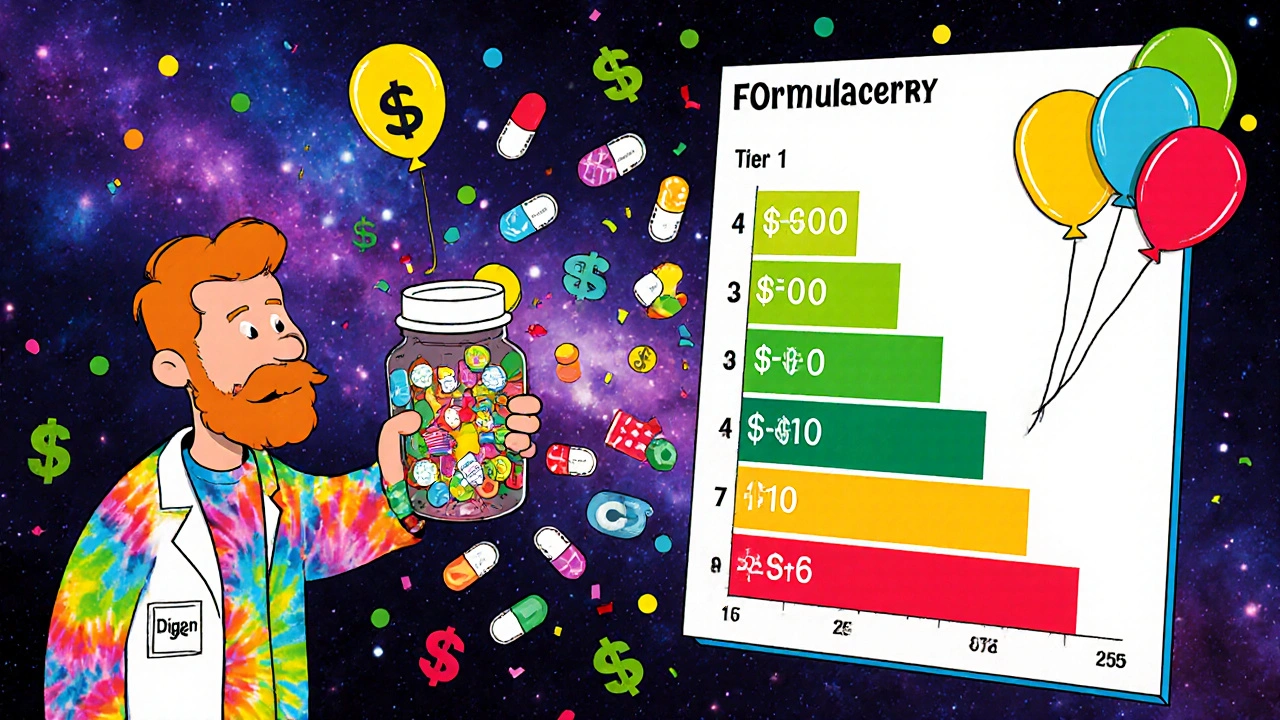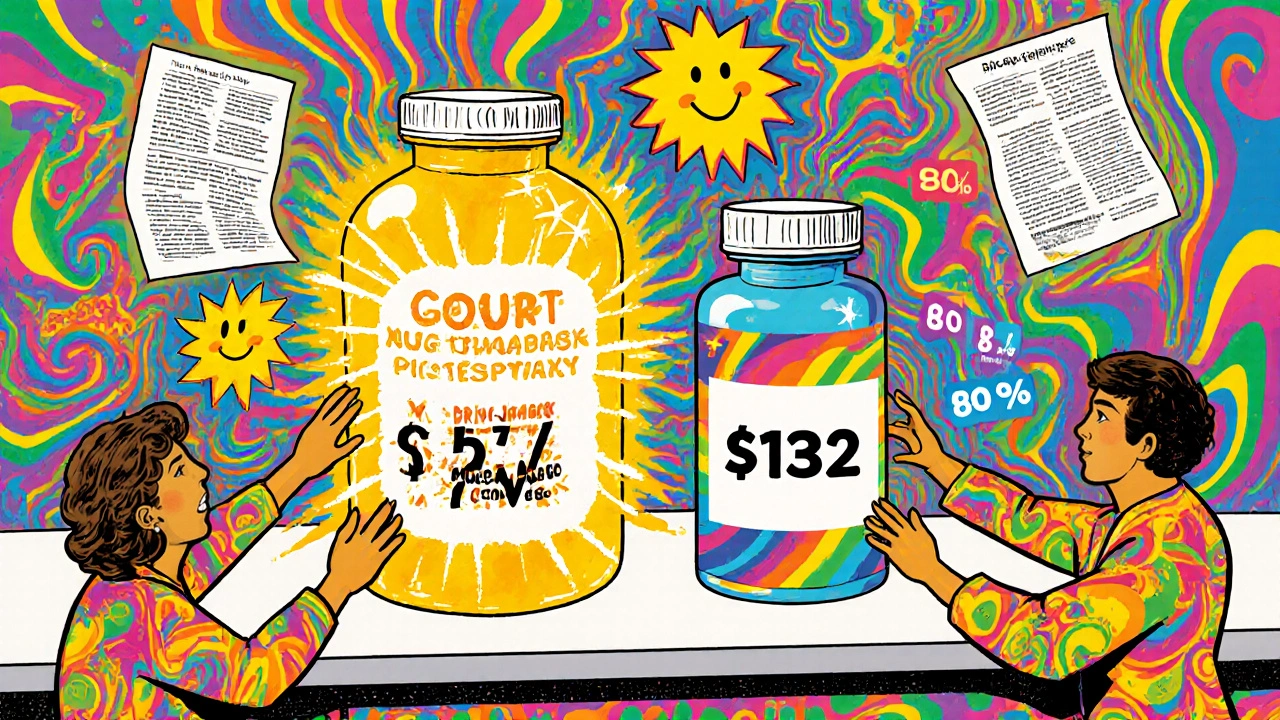When you pick up a prescription, you might not realize you’re choosing between two very different kinds of medicine. One is made by just one company. The other? Made by dozens. This isn’t just about branding-it’s about your wallet, your health, and whether your insurance will even cover it.
What’s the difference between single-source and multi-source drugs?
A single-source drug is the original brand-name version, and no other company is legally allowed to make a copy. This usually happens when the drug is still under patent protection or has some kind of exclusivity from the FDA. Think of drugs like Humira before 2023, or newer cancer treatments. Only one manufacturer makes it. That means no competition. And when there’s no competition, prices stay high.
A multi-source drug is the opposite. It’s a medication that has generic versions approved by the FDA. So, the brand-name version (like Lipitor) is still around, but now there are 10, 20, or even 50 other companies making the exact same active ingredient. These are the generics you see at the pharmacy counter with a much lower price tag.
The FDA tracks this with something called the Orange Book. It only gives therapeutic equivalence codes to multi-source drugs. If a drug doesn’t have one of these codes, it’s likely single-source. That’s your first clue.
Why does this matter for your out-of-pocket costs?
Let’s say you’re on a medication that costs $587 a month. That’s the average for single-source drugs, according to a 2022 Kaiser Family Foundation survey. Now switch to a multi-source version of the same drug? That drops to $132. That’s not a typo. That’s an 77% drop.
Here’s why: multi-source drugs are priced under something called Maximum Allowable Cost (MAC). Insurers and pharmacy benefit managers (PBMs) set a cap on what they’ll pay for a generic. That cap is usually 50-60% lower than the brand-name’s average wholesale price. And because there are so many manufacturers competing, they fight to offer the lowest price just to get on the formulary.
Single-source drugs don’t have that pressure. Their list prices and rebates move together-dollar for dollar. So if the manufacturer raises the price by $100, they might give the PBM a $100 rebate. The net price stays the same. But you? You still pay the full list price at the pharmacy unless your plan has a cap. That’s why patients on single-source drugs are nearly twice as likely to skip doses because they can’t afford them.
Are generics really the same as brand-name drugs?
The FDA says yes. All approved generics must contain the same active ingredient, in the same strength, and work the same way in your body. They have to prove they’re bioequivalent-meaning the amount of drug absorbed into your bloodstream is within 80-125% of the brand-name version. That’s not a guess. That’s a strict scientific test.
But here’s the catch: people still report differences. On Drugs.com, multi-source drugs have an average rating of 4.2 out of 5. Brand-name? 4.5. Not a huge gap. But 68% of negative reviews for generics mention “inconsistent effectiveness” between different manufacturers.
Why? Because while the active ingredient is identical, the fillers, dyes, and coating can vary. For most people, this doesn’t matter. But for drugs with a narrow therapeutic index-like warfarin, thyroid meds, or seizure drugs-even tiny differences can cause problems. If you’re on one of these, talk to your doctor. Don’t assume all generics are interchangeable.
Also, you might get a different generic every time you refill. A 2022 report found 63% of patients on multi-source drugs switched manufacturers at least once in a year. That’s because PBMs change contracts to get cheaper deals. You might get a pill that looks different, tastes different, or even has a different shape. It’s still legal. It’s still safe. But if you notice side effects changing, tell your pharmacist.

Insurance and formularies: How your plan controls your choices
Your insurance doesn’t just pick what’s cheapest. It picks what’s easiest to manage. That’s why most plans have tiered formularies. Single-source drugs? Usually Tier 3 or 4-higher copay. Multi-source? Tier 1-lowest copay.
Many plans require step therapy. That means you have to try the generic first. If it doesn’t work, then you can request the brand. But that takes paperwork. A 2023 NEHI Network study found patients needed 2-3 pharmacy visits just to understand their coverage.
And here’s a twist: some PBMs create “single-source generics.” That’s when one generic manufacturer gets exclusive rights to make the drug. No other generics are covered. It’s still technically multi-source, but in practice, it’s just one supplier. And guess what? That version often costs almost as much as the brand. Truveris found this happens more than you’d think-especially with older drugs that still have high demand.
What you can do right now
- Ask your pharmacist: “Is this a brand or a generic? And which manufacturer makes it?” They can tell you if your last refill came from a different company.
- Check your formulary: Log into your insurer’s website. Look up your drug. See what tier it’s on. See what alternatives are covered.
- Request a generic: Unless your doctor says otherwise, always ask for the generic version. It’s your right.
- Don’t panic over packaging: If your pill looks different, it’s not necessarily a problem. But if you feel different-more side effects, less effect-call your doctor.
- Use the FDA’s resources: Their website has a simple guide called “Understanding Generic Drugs.” It’s short, clear, and updated every year.

What’s changing in 2025?
The FDA is speeding up generic approvals. Thanks to the Generic Drug User Fee Amendments (GDUFA III), the goal is to approve generics in 10 months by 2025. That means more single-source drugs will become multi-source faster.
Also, the Inflation Reduction Act now penalizes drugmakers who raise prices on single-source drugs faster than inflation. That’s a big deal. It doesn’t cap prices, but it forces companies to pay rebates to Medicare if they hike prices too much.
And then there’s the rise of “authorized generics.” These are brand-name drugs made by the same company but sold as generics. Humira did this in 2023. It’s a way for the original maker to keep profits while letting generics enter the market. It’s smart business. But for patients? It means more options-and sometimes lower prices.
The bottom line
Most prescriptions today are multi-source. In fact, 90% of all prescriptions filled in the U.S. are generics. But they only make up 23% of total drug spending. That’s the power of competition.
Single-source drugs are important. They’re often breakthrough treatments for cancer, autoimmune diseases, and rare conditions. But they shouldn’t be the only option if you can’t afford them.
If you’re paying hundreds a month for a drug that has a generic version, you’re not stuck. You have rights. You have choices. Talk to your pharmacist. Ask your doctor. Check your plan. You might be saving hundreds without even trying.
Medicine isn’t about brands. It’s about what works-and what you can actually afford to take every day.


Amanda Wong
November 26, 2025 AT 18:52Cynthia Springer
November 26, 2025 AT 21:33Ezequiel adrian
November 28, 2025 AT 07:55Ali Miller
November 30, 2025 AT 01:00JAY OKE
December 1, 2025 AT 02:24Joe bailey
December 2, 2025 AT 18:31Stephen Adeyanju
December 4, 2025 AT 12:35Aaron Whong
December 5, 2025 AT 23:56